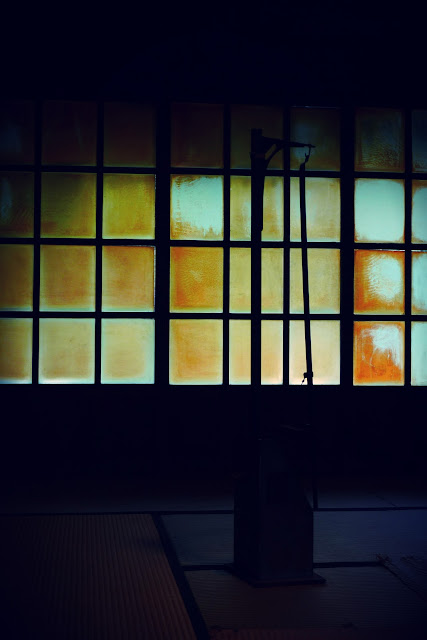The Museum exhibits;
- Sixteenth century thatched roof farmhouses of the working class rice-farmer, wealthy extended family, and important political figures.
- Early twentieth century houses infused with traditional Japanese style and Western modern elements. House of Kunio Mayekawa, 1942
- Recreation of a 'typical' Tokyo street in Edo times featuring a public bathhouse, tailor's workshop, soy sauce workshop, bar, stationary shop, Oil paper umbrella Wholesaler and other great examples.
The following are some key photographs I took today, with the intention of capturing the wonderful play of light and darkness within the thatched farmhouses. Upon entering the homes through the earthen floor, the smell and texture of rich smoke rising from the hearth instantly engages the senses. Your eyes adjust to the darkness and your body temperature begins to increase depending on proximity to the fire. Your eyes trace through the choreography of rooms divided by Shoji panels, and then they begin to look upwards at the black structure of the enormous gabled roof. My up-most attention given to these homes. My senses were completely engaged.
I believe their are values key inherent in the design and behavior of the Japanese House. Values that can be used by the contemporary architect to start give greater responsibility to the home once again. A research project of mine for the next year is precisely on finding and articulating these values and studying the Traditional Japanese Home is a major part of this. Therefore, today's experience further enhanced my already intense passion and curiosity about The Japanese House, Edo Japanese Culture and the astounding transformation Japan experienced through Dutch influence and particularly after US Navy Captain Commodore Perry's visit in 1852 before the beginning of the Meiji Era (1868).













